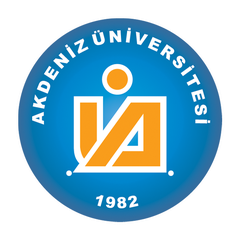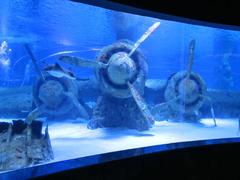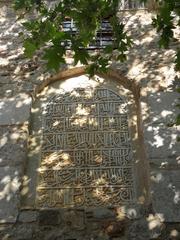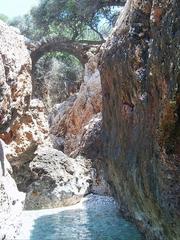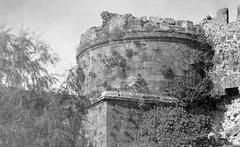Sillyon Antalya: Comprehensive Visitor Guide to Tickets, Hours, and Attractions
Date: 03/07/2025
Introduction
Perched atop a commanding plateau in the Antalya Plain, Sillyon Ancient City is one of Turkey’s most remarkable yet lesser-known archaeological treasures. Located approximately 30 kilometers from Antalya’s city center and close to the village of Gölcük, Sillyon offers a genuine journey through millennia of Anatolian history. Its storied past stretches from its mythic foundation by the seers Mopsos and Calchas after the Trojan War to its development under Hellenistic, Roman, Byzantine, and Seljuk rule. Sillyon is best known for its formidable fortifications, which famously resisted Alexander the Great’s siege in 333 BCE, symbolizing the enduring spirit of the Pamphylia region.
Visitors can explore an array of ancient ruins: city walls, a Roman theater, gymnasium, baths, temples, Byzantine churches, and early Islamic cemeteries. The city’s elevated position provides panoramic vistas over the Mediterranean coastline and rural landscapes, making it a haven for history buffs, photographers, and travelers seeking tranquility away from Antalya’s busier sites.
Despite its significance, Sillyon remains accessible and crowd-free, with free entry and flexible visiting hours. Its rugged terrain rewards those prepared for moderate hiking, and its proximity to renowned sites like Perge and Aspendos makes it an excellent addition to any Antalya itinerary.
This guide offers essential information on Sillyon’s history, archaeological highlights, visiting hours and tickets, accessibility, nearby attractions, and practical travel tips. For maps, audio guides, and updates, consider downloading the Audiala app and consulting resources like the Antalya Tourism Page and the Turkish Ministry of Culture and Tourism. Discover Sillyon’s enduring legacy and immerse yourself in the layers of Antalya’s ancient heritage (AdventureFolio; AncientPages.com; visitmyturkey.com).
Contents
- Introduction
- Historical Overview
- Archaeological Highlights
- Visiting Information (Hours, Tickets, Accessibility)
- Site Experience and Facilities
- Special Experiences
- Nearby Attractions
- Practical Tips
- Frequently Asked Questions (FAQ)
- Conclusion
- Sources
Historical Overview
Origins and Foundation
Sillyon, set atop a strategic plateau in historic Pamphylia, is believed to have been founded after the Trojan War by legendary seers Mopsos and Calchas (visitbelek.com). Archaeological evidence points to continuous habitation from the late Bronze or early Iron Age, with significant development during the Hellenistic period (visitmyturkey.com).
Classical and Hellenistic Eras
Sillyon was a member of the Delian League in the 5th century BCE, actively participating in the political affairs of classical Greece. Its formidable defenses famously thwarted Alexander the Great’s siege in 333 BCE, a testament to both its strategic location and the resolve of its defenders. Under the Seleucids, the city flourished, building monumental structures and minting its own coins until the 3rd century CE.
Roman and Byzantine Periods
Integrated into the Roman Empire, Sillyon enjoyed prosperity as a regional center, retaining a measure of autonomy and significance. In the Byzantine era, it became a crucial defensive site and an ecclesiastical hub, producing two Ecumenical Patriarchs and maintaining vital trade and communication routes.
Seljuk Conquest and Later History
In 1207, Sillyon was incorporated into the Seljuk Sultanate, marking a gradual decline in its stature. The city’s layered ruins reflect its multicultural history, from Hellenistic ramparts to Islamic cemeteries.
Archaeological Highlights
- City Walls & Fortifications: The robust Hellenistic city walls, featuring towers and monumental gates, exemplify Sillyon’s legendary defenses (whattodoinantalya.com).
- Roman Theater: Once seating up to 8,000, the theater—though partially damaged by a 1969 landslide—remains a focal point of the site (visitmyturkey.com).
- Agora and Public Buildings: The agora, baths, gymnasium, and odeon provide insight into the city’s vibrant social and cultural life.
- Religious Structures: Remnants of classical temples, Byzantine churches, and a Seljuk mosque showcase the city’s evolving religious landscape (visitbelek.com).
- Cisterns and Water Management: Ingenious water systems underline the city’s advanced public utilities.
- Early Islamic Cemetery: Over 250 tombs mark Sillyon as home to one of the region’s oldest Muslim cemeteries (Hispanatolia).
Visiting Information
Location and Transportation
Sillyon is located near Gölcük village, about 30 km from Antalya and 16 km from Serik. The site is best accessed by private car or taxi, as public transportation is limited (AdventureFolio; Turkish Archaeological News). Follow the D400 highway and brown “Sillyon” signs near Serik or Asar Köy.
Free parking is available near the base of the plateau, close to the Sillyon Market Café (which may not always be open).
Visiting Hours and Tickets
- Hours: Sillyon is open 24/7, granting maximum flexibility for visitors (HerAntalya).
- Tickets: Admission is free. No ticket or reservation is required.
- Guided Tours: While no official ticket office exists, local operators and agencies in Antalya and Serik offer guided tours for a fee.
Accessibility & Terrain
Accessing the main ruins involves a moderately steep uphill hike over uneven, unmarked terrain. The path is not suitable for wheelchairs or strollers, and visitors should wear sturdy shoes. The ascent can be challenging for young children, elderly visitors, or those with mobility issues.
On-Site Experience and Facilities
- Atmosphere: Sillyon offers a tranquil, uncrowded environment, ideal for those seeking a peaceful exploration or photography opportunities (AlanyaTransfer).
- Facilities: There are no restrooms, water fountains, or food vendors on site. Bring your own water and snacks.
- Safety: Some sections of the ruins may be unstable due to landslides and lack of restoration. Exercise caution, especially near steep drops or loose stones.
Special Experiences
- Photography: The plateau provides sweeping views of the Mediterranean, greenhouses, and mountains—ideal for sunrise or sunset shots.
- Nature: The site is home to sheep, goats, tortoises, and a diversity of plant life.
- Events: On occasion, archaeological workshops or cultural events are organized; check local listings for updates.
Nearby Attractions
- Perge Ancient City: A major Roman site with extensive ruins, just 20 km away.
- Aspendos Theater: Celebrated for its well-preserved Roman theater, approximately 15 km from Sillyon.
- Manavgat Waterfalls: A natural retreat for those wishing to combine history and outdoor adventure.
- Belek: A resort town with beaches and golf courses, ideal for relaxation after historical sightseeing.
Practical Tips
- Best Time to Visit: March–May and September–October offer comfortable weather for hiking and exploring.
- What to Bring: Sturdy shoes, sun protection, water, snacks, and a camera.
- Time Needed: Allocate 2–4 hours for a thorough visit.
- Preparation: Inform someone of your plans if visiting alone, as the site is remote and unsupervised.
Frequently Asked Questions (FAQ)
Q: What are Sillyon’s visiting hours?
A: The site is open 24/7 with free entry.
Q: Is there an entrance fee?
A: No, entry is free.
Q: How do I get there?
A: By private car or taxi via the D400 highway, following “Sillyon” signs near Serik or Asar Köy.
Q: Are there guided tours?
A: Some local operators offer guided tours for a fee; most visitors explore independently.
Q: Is Sillyon suitable for children or visitors with limited mobility?
A: The steep, uneven terrain can be difficult for young children and is not accessible for wheelchairs.
Q: Are there facilities like restrooms or cafes?
A: No, visitors should come prepared with their own supplies.
Q: When is the best time to visit?
A: Spring and autumn offer mild weather and lush scenery.
Conservation and Recent Developments
In 2024, Sillyon was included in the “Future Heritage Project,” a major conservation initiative funded by Türkiye’s Ministry of Culture and Tourism, ensuring its preservation and enhancing visitor infrastructure (dailysabah.com). Artifacts from Sillyon are displayed in regional museums, including the Antalya Archaeology Museum.
Conclusion
Sillyon Ancient City offers an immersive, crowd-free exploration of Anatolia’s layered history. Its panoramic views, rich ruins, and authentic atmosphere make it a must-visit for those eager to experience Antalya’s ancient world beyond the mainstream. With free admission, flexible visiting hours, and ongoing conservation, Sillyon stands as a testament to the region’s resilience and multicultural legacy.
For up-to-date information, download the Audiala app, consult the Antalya Tourism Page, and the Turkish Ministry of Culture and Tourism. Pair your visit with sites like Perge and Aspendos for a comprehensive journey through Antalya’s ancient landscape.
Sources
- AdventureFolio
- AncientPages.com
- Antalya Tourism Page
- dailysabah.com
- HerAntalya
- visitmyturkey.com
- Turkish Ministry of Culture and Tourism
- Turkish Archaeological News
- visitbelek.com
- ThisIsAntalya
